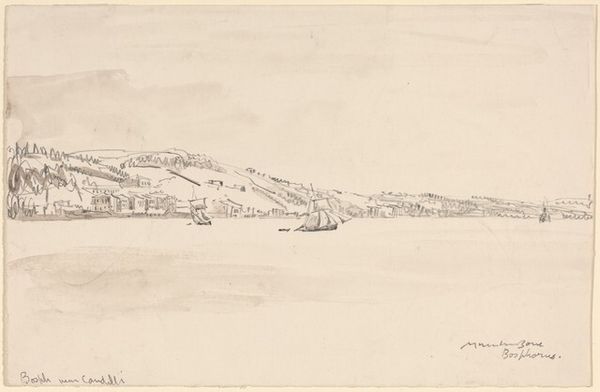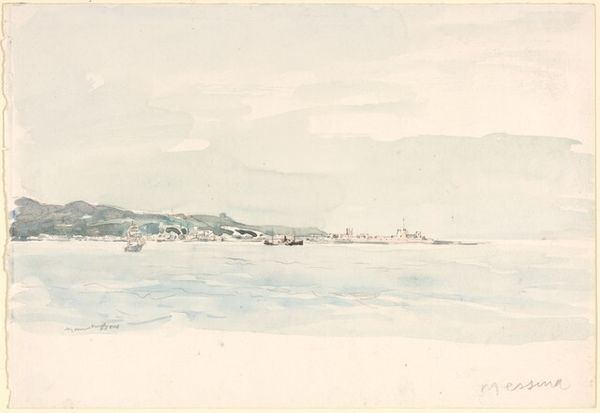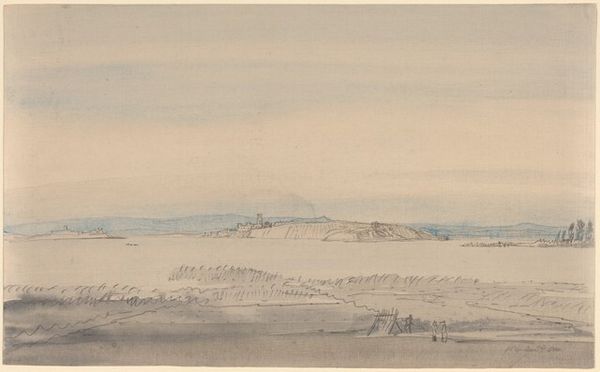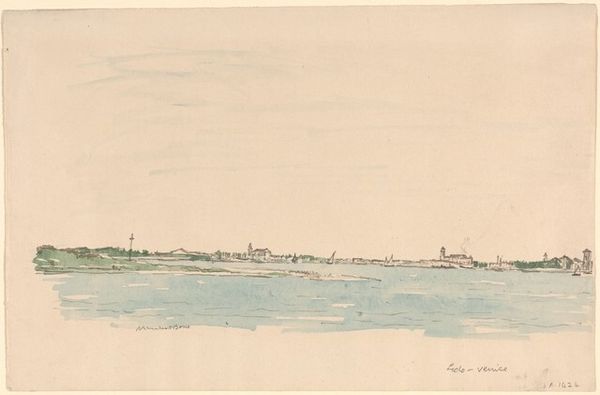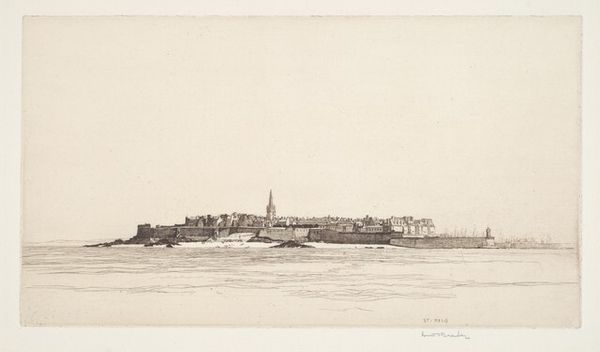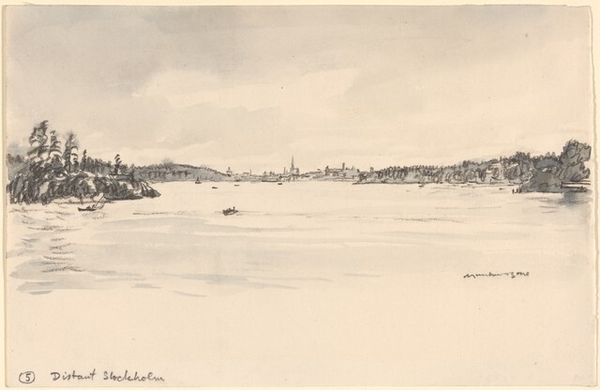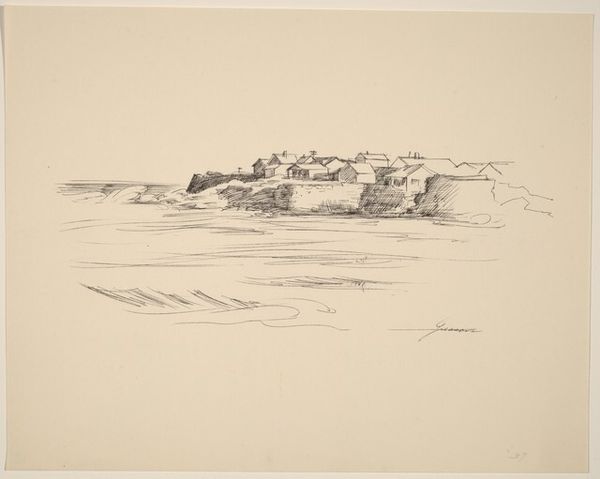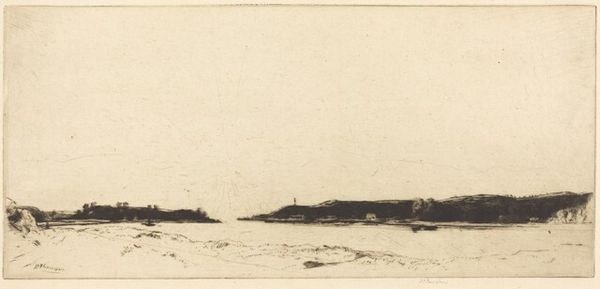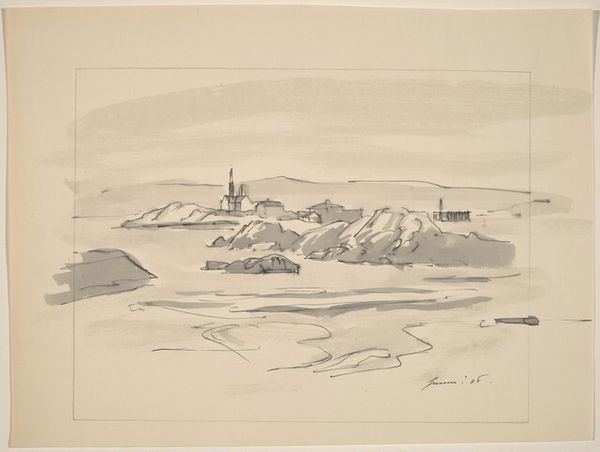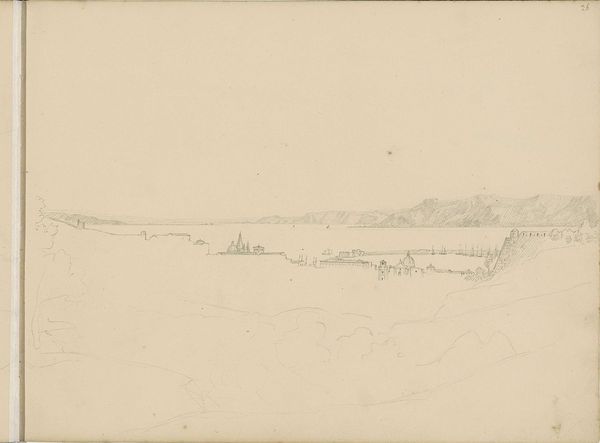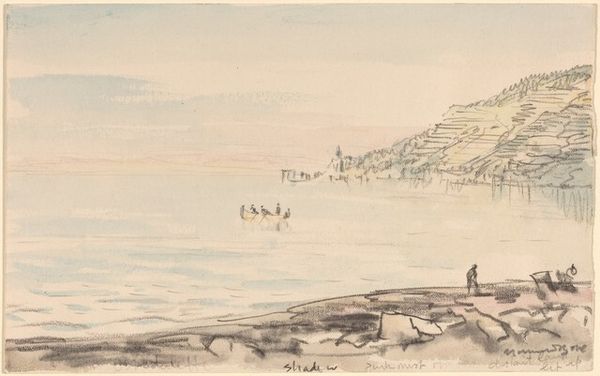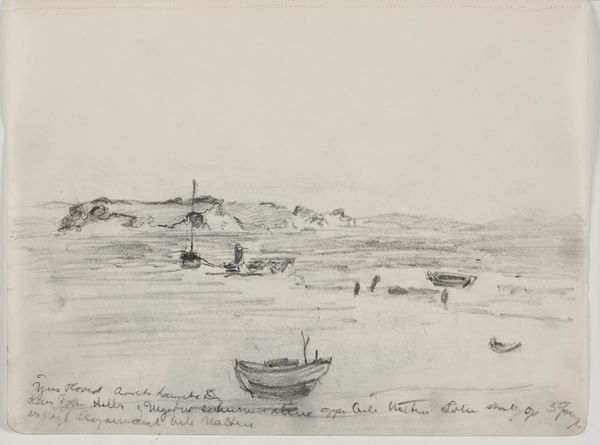
drawing, watercolor, pencil
#
pencil drawn
#
drawing
#
impressionism
#
pencil sketch
#
landscape
#
watercolor
#
pencil drawing
#
pencil
#
cityscape
Dimensions: overall (approximate): 24.5 x 36.1 cm (9 5/8 x 14 3/16 in.)
Copyright: National Gallery of Art: CC0 1.0
Curator: This is Muirhead Bone’s "Town Of Gallipoli," rendered in pencil and watercolor. It presents a seemingly serene vista of the town across the water. What are your immediate thoughts? Editor: It’s strikingly muted, almost melancholic. The subtle washes of color and delicate lines suggest a quiet, somber atmosphere, which seems quite a contrast to the violent history associated with Gallipoli. I wonder how that tension plays out in his material choices. Curator: Indeed. Knowing that Bone was an official war artist during World War I casts a long shadow. Gallipoli represents one of the greatest military disasters for the Allied forces, fraught with issues of colonial ambition, geopolitical strategy, and immense human cost. Seeing it rendered so softly jars, doesn't it? Editor: It does. Pencil and watercolor are portable and immediate; perfect for a war artist in the field. But these materials, traditionally associated with sketches and preparatory studies, almost soften or domesticate the scene. How does this reflect Bone's own position within that conflict, his relationship to the British military-industrial complex? Curator: That’s precisely the question. Bone's role as an official artist was to document the war effort, but how complicit was he in romanticizing a brutal campaign? This idyllic portrayal begs the question: Whose narrative is he constructing and for whom? It almost feels like propaganda cloaked in artistry. Editor: Propaganda is too simple. It could equally function as a site of mourning. Considering the social context of mourning during and immediately after the war, a work such as this allows for the beginnings of reconciliation between the trauma of war and the memory of homeland. The method in which he produced these works should also not be overlooked. The quick marks denote the experience as being one, immediate process of creating meaning in relation to events occurring. Curator: That reading brings nuance, certainly. Perhaps the quietness speaks not of erasure but a kind of respectful distance. It lets us reflect on the broader consequences of imperial overreach and the lingering trauma of the campaign. It's less about glorifying British might and more about acknowledging the enduring impact of war on the landscape and its people. Editor: The landscape holds the story, the materials evoke it. Understanding these choices makes the artwork itself into a tool to critically reflect on that historical weight. Curator: Yes, considering Bone’s tools alongside the historical and political dimensions transforms a seemingly tranquil landscape into a potent symbol. Editor: Ultimately revealing art's entanglement with both power and the quiet, persistent acts of witnessing.
Comments
No comments
Be the first to comment and join the conversation on the ultimate creative platform.
